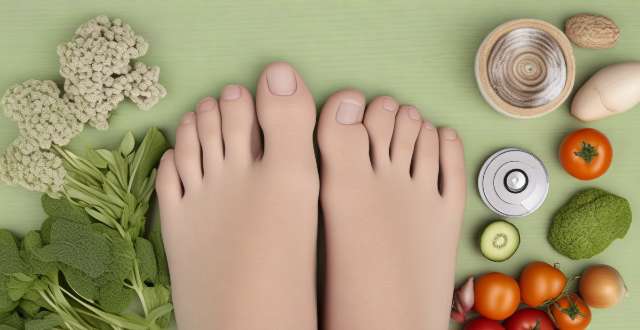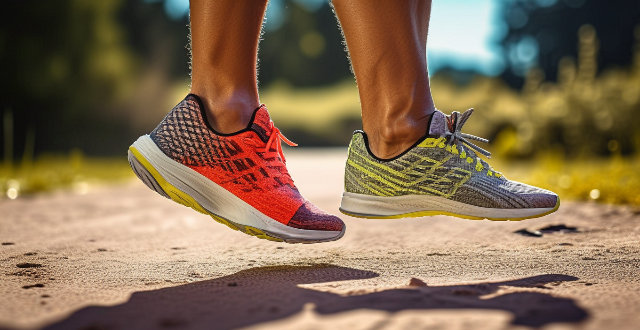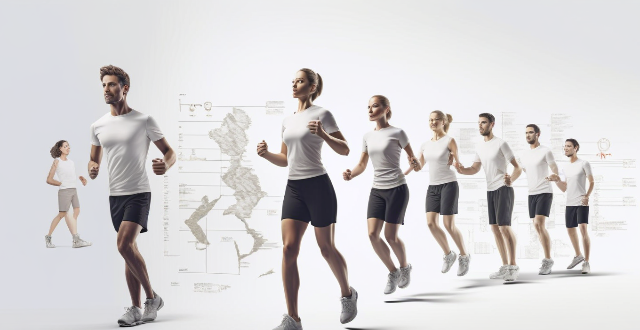Foot Calf

What are the consequences of neglecting foot hygiene ?
The text discusses the various consequences of neglecting foot hygiene, including physical health risks such as athlete's foot, toenail fungus, ingrown toenails, blisters and calluses, plantar warts, smelly feet (bromodosis), corns, bunions, gout, cellulitis, diabetic foot ulcers, deep vein thrombosis (DVT), and peripheral neuropathy. It also addresses mental health impacts like embarrassment and self-consciousness, anxiety, and stress. The text provides detailed descriptions and prevention tips for each issue, emphasizing the importance of good foot care habits to maintain overall foot health.

What are the best stretches for cooling down after a gym session ?
After a gym session, it's crucial to gradually cool down your body. Here are the best stretches for that: hamstring, quadriceps, calf, hip flexor, and back stretches. These exercises help reduce heart rate, lower blood pressure, prevent muscle soreness, improve flexibility, and range of motion. Remember to hold each stretch for at least 30 seconds and avoid bouncing to prevent injury.

What are some good stretching exercises for after a run ?
After a run, it's important to stretch your muscles to prevent injury and improve flexibility. Here are some good stretching exercises for after a run: - Hamstring Stretch: Sit on the ground with your legs straight out in front of you, reach forward and try to touch your toes without bending your knees, hold for 15-30 seconds and repeat 2-3 times. - Quadriceps Stretch: Stand upright and bend one knee, bringing your heel towards your buttocks, grasp your ankle with one hand and hold onto a stable object with the other hand for balance, pull your foot closer to your buttocks until you feel a stretch in the front of your thigh, hold for 15-30 seconds and repeat 2-3 times on each leg. - Calf Stretch: Stand facing a wall with your hands placed against it at shoulder height, step one foot back behind you, keeping both heels flat on the ground, bend your front knee slightly while keeping your back leg straight, hold for 15-30 seconds and repeat 2-3 times on each leg. - Gluteal Stretch: Sit on the ground with your legs bent and feet flat on the floor, place your right ankle over your left knee, creating a "figure four" shape with your legs, gently push down on your right knee until you feel a stretch in your glutes, hold for 15-30 seconds and repeat 2-3 times on each side.

How important is footwear when it comes to running techniques ?
Footwear plays a crucial role in running techniques, improving performance and reducing the risk of injuries. Proper footwear should provide cushioning, support, fit, comfort, traction, grip, breathability, and durability. To choose the right pair of running shoes, consider your foot type (neutral, flat, or high arches), running style (heel striker, midfoot striker, or forefoot striker), terrain (road or trail), and distance. Try before you buy to ensure proper fit and comfort.

How can I select the right pair of ski boots ?
Ski boots are an essential piece of equipment for any skier. Here are some tips to help you choose the perfect ski boots: 1. Determine your skiing ability level. 2. Consider your foot type. 3. Look for proper fit and comfort. 4. Check for proper support and control. 5. Try before you buy. 6. Consider customization options.

How can I incorporate stretching into my daily office routine ?
Incorporating stretching into a daily office routine is crucial for maintaining good posture, preventing muscle stiffness, and reducing the risk of work-related injuries. Here are some tips to help you add stretching to your daily routine: Start with a warm-up: Begin your day with simple warm-up exercises like shoulder shrugs, arm circles, and neck rolls. Take breaks to stretch: Set an alarm or use a timer app to remind yourself to take short breaks throughout the day to stretch your wrists, back, and legs. Use your lunch break wisely: Take advantage of your lunch break to do a more comprehensive stretching session. Find a quiet space where you won't be disturbed and stretch your hamstrings, quads, and calves. End your day with cool-down stretches: Before leaving the office, take a few minutes to cool down and stretch out any tight muscles that have developed during the day. Stretch your chest, hip flexors, and shoulders. Remember to listen to your body and only stretch to the point of mild discomfort. Never force a stretch or bounce, as this can lead to injury. By incorporating these simple stretching exercises into your daily office routine, you'll improve your overall well-being and increase productivity at work.

Are there any specific stretches or warm-up routines that aid in sports recovery ?
Recovery is an essential aspect of sports and physical activities. Stretching and warm-up routines can aid in reducing the risk of injuries, improving performance, and enhancing overall well-being. Specific stretches such as hamstring, calf, and quadriceps stretches can increase flexibility, reduce muscle tension, and promote blood flow. Warm-up routines like cardiovascular exercises, resistance band exercises, and foam rolling can activate muscles, improve circulation, and reduce tightness. Incorporating these routines into your recovery process can help you achieve better results and prevent injuries.

What are the best exercises for sports recovery ?
The text discusses the importance of sports recovery and suggests various exercises to aid in this process. The exercises include stretching, foam rolling, light cardiovascular exercise, and yoga. Stretching helps increase blood flow, reduce muscle tension, and improve flexibility. Foam rolling relieves muscle tightness and soreness by applying pressure to specific areas of the body. Light cardiovascular exercise increases blood flow and promotes recovery. Yoga improves flexibility, reduces stress, and promotes relaxation while also improving balance and stability. The author suggests several specific exercises for each category to help athletes recover from their workouts or competitions.

What are some discreet exercises I can do in an open-plan office ?
In an open-plan office, it's important to maintain your health and fitness while also being considerate of your colleagues. Here are some discreet exercises you can do in such a setting: 1. Desk Chair Exercises: Seated Leg Lifts and Seated Hip Circles 2. Under Desk Exercises: Calf Raises and Ankle Rotations 3. Stretching Exercises: Shoulder Shrugs and Wrist Stretches 4. Breathing Exercises: Deep Breathing and Alternate Nostril Breathing These exercises can be done without disturbing others around you. Remember to take breaks throughout the day to move around and stretch, which will not only help improve your physical health but also increase productivity and focus.